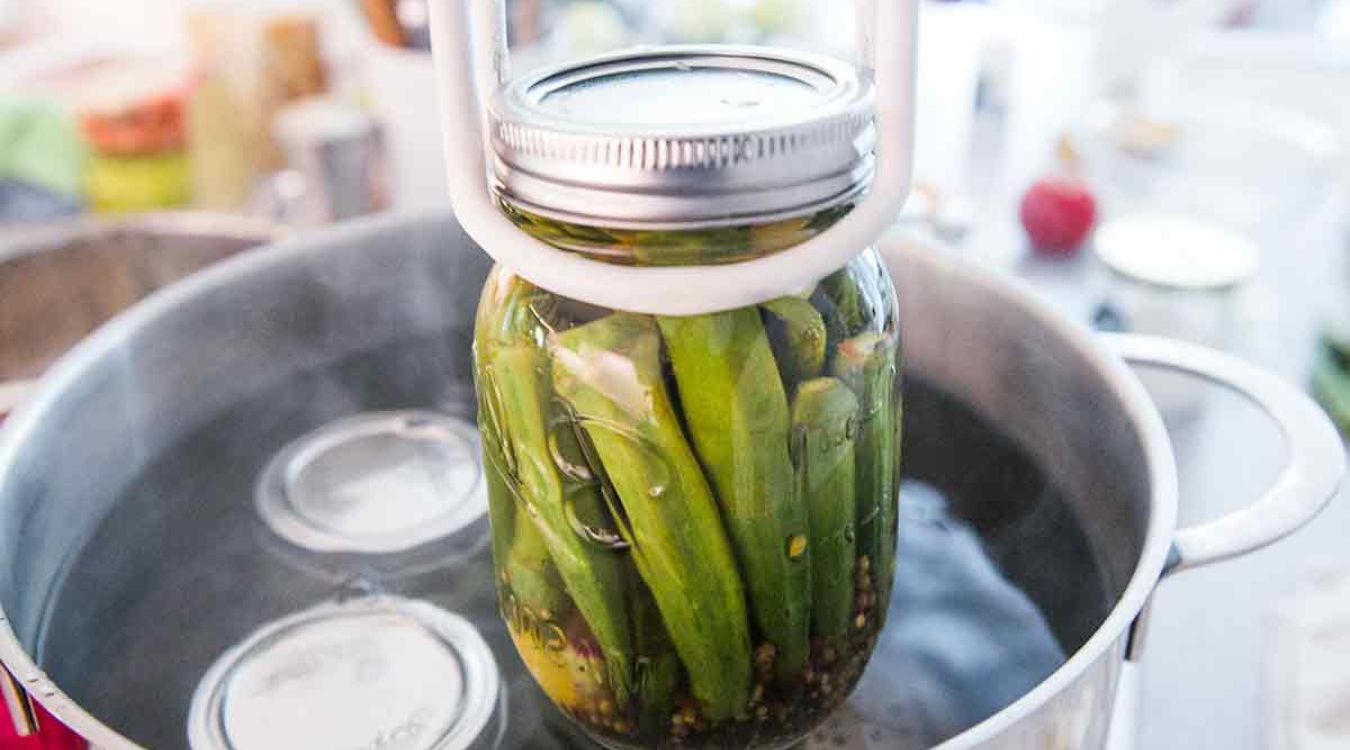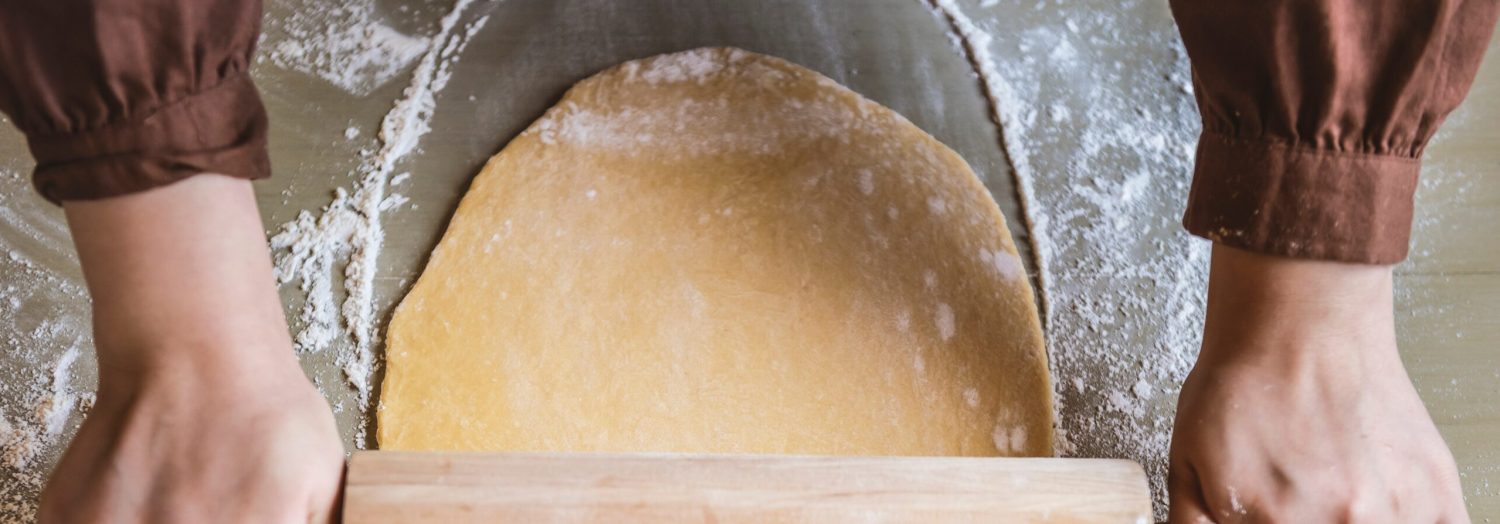Pickled okra is a delightful way to preserve the unique flavor and texture of okra. This tangy and crunchy treat can be enjoyed on its own, as a side dish, or as a zesty addition to salads and sandwiches. The combination of vinegar, garlic, and spices creates a mouthwatering experience that is both refreshing and satisfying.
Some of the ingredients in this recipe might not be commonly found in every household. For instance, okra is a green, pod-like vegetable that might require a trip to a well-stocked supermarket or a farmer's market. Additionally, mustard seeds and dill seeds are spices that may not be in everyone's pantry, so be sure to check the spice aisle when shopping.

Ingredients for Pickled Okra Recipe
Okra: A green, pod-like vegetable that is the star of this recipe, providing a unique texture and flavor.
White vinegar: A clear, acidic liquid that acts as the primary pickling agent, giving the okra its tangy taste.
Water: Used to dilute the vinegar, balancing the acidity.
Salt: Enhances the flavor and helps with the preservation process.
Sugar: Adds a touch of sweetness to balance the acidity of the vinegar.
Mustard seeds: Small, round seeds that add a subtle, spicy flavor to the pickling brine.
Dill seeds: Provide a distinct, aromatic flavor that complements the okra.
Garlic: Adds a robust, savory flavor to the pickling brine.
Technique Tip for Pickled Okra
When packing the okra into the jars, make sure to arrange them vertically and as tightly as possible. This not only maximizes the space but also ensures that the vinegar mixture can evenly penetrate each piece. Additionally, lightly tapping the jars on the counter after filling them with the vinegar mixture helps to release any trapped air bubbles, ensuring a better seal and longer shelf life.
Suggested Side Dishes
Alternative Ingredients
fresh okra - Substitute with green beans: Green beans have a similar texture and can absorb the pickling brine well.
white vinegar - Substitute with apple cider vinegar: Apple cider vinegar provides a slightly sweeter and fruitier flavor profile.
water - Substitute with vegetable broth: Vegetable broth adds an extra layer of flavor to the pickling brine.
salt - Substitute with kosher salt: Kosher salt has a coarser grain and can enhance the flavor without adding iodine.
sugar - Substitute with honey: Honey adds a natural sweetness and a slight floral note to the brine.
mustard seeds - Substitute with caraway seeds: Caraway seeds offer a similar pungent flavor and can add a unique twist.
dill seeds - Substitute with fennel seeds: Fennel seeds provide a sweet and slightly licorice-like flavor that complements pickling.
peeled garlic - Substitute with shallots: Shallots offer a milder, sweeter flavor that can enhance the overall taste of the pickles.
Alternative Recipes Similar to Pickled Okra
How to Store or Freeze Pickled Okra
Ensure your pickled okra jars are completely cooled before storing. This helps in maintaining the integrity of the pickling process and ensures the flavors meld perfectly.
Store the sealed jars in a cool, dark place such as a pantry or cupboard. The absence of light and heat will help preserve the pickled vegetables for up to a year.
Once opened, keep the jars of pickled okra in the refrigerator. This will keep them fresh and crunchy for up to a month.
For freezing, it's best to avoid freezing the pickled okra directly in the jars. Instead, transfer the okra and some of the brine into freezer-safe bags or containers. This prevents the glass from cracking and makes it easier to thaw only what you need.
Label your jars or containers with the date of pickling. This ensures you use the oldest batches first, maintaining a rotation that keeps your pickled goods at their best.
When ready to use, thaw the frozen pickled okra in the refrigerator overnight. This gradual thawing process helps maintain the texture and flavor of the okra.
Avoid refreezing pickled okra once thawed, as this can degrade the quality and texture. Instead, portion out smaller amounts before freezing to ensure you only thaw what you need.
Always check the seal of your jars before consuming. If the seal is broken or the brine looks cloudy or off, it's best to discard the jar to avoid any risk of spoilage.
How to Reheat Leftovers
For a quick and easy method, place the pickled okra in a microwave-safe dish. Cover it with a microwave-safe lid or plastic wrap, leaving a small vent. Heat on medium power for 1-2 minutes, checking halfway through to ensure it doesn't overheat.
If you prefer a more traditional approach, preheat your oven to 350°F (175°C). Arrange the pickled okra in a single layer on a baking sheet. Cover with aluminum foil to prevent drying out. Bake for about 10 minutes or until heated through.
For a stovetop method, heat a non-stick skillet over medium heat. Add the pickled okra and a splash of water or olive oil. Stir occasionally for about 5 minutes until warmed to your liking.
If you have an air fryer, preheat it to 350°F (175°C). Place the pickled okra in the basket in a single layer. Heat for 3-5 minutes, shaking the basket halfway through to ensure even heating.
For a gentle reheating method, use a double boiler. Fill the bottom pot with water and bring it to a simmer. Place the pickled okra in the top pot and cover. Heat for about 5-7 minutes, stirring occasionally, until warmed through.
Best Tools for This Recipe
Saucepan: Used to combine vinegar, water, salt, and sugar and bring them to a boil.
Canning jars: Containers used to pack the okra, garlic, mustard seeds, and dill seeds.
Knife: Essential for trimming the stems of the okra.
Cutting board: Surface for safely trimming the okra.
Measuring cups: Used to measure out the vinegar and water accurately.
Measuring spoons: Used to measure the salt, sugar, mustard seeds, and dill seeds.
Tongs: Helpful for handling the hot jars during the canning process.
Boiling water bath canner: Used to process the sealed jars in boiling water for 10 minutes.
Jar lifter: A specialized tool to safely lift the hot jars out of the boiling water bath.
Funnel: Assists in pouring the hot vinegar mixture into the jars without spilling.
Ladle: Used to transfer the hot vinegar mixture from the saucepan to the jars.
Clean cloth: For wiping the rims of the jars before sealing them.
How to Save Time on Making Pickled Okra
Prepare ingredients ahead: Wash and trim the okra in advance to save time during the pickling process.
Use pre-measured spices: Measure out the mustard seeds, dill seeds, and salt before starting to streamline the recipe.
Boil water efficiently: Use an electric kettle to quickly boil the water and vinegar mixture.
Sterilize jars in advance: Sterilize the canning jars ahead of time to ensure they are ready for packing the okra.
Batch process: Prepare multiple jars at once to maximize efficiency and minimize overall preparation time.

Pickled Okra Recipe
Ingredients
Main Ingredients
- 1 lb fresh okra
- 2 cups white vinegar
- 1 cup water
- 2 tablespoon salt
- 1 tablespoon sugar
- 1 teaspoon mustard seeds
- 1 teaspoon dill seeds
- 4 cloves garlic peeled
Instructions
- 1. Wash the okra and trim the stems.
- 2. In a saucepan, combine vinegar, water, salt, and sugar. Bring to a boil.
- 3. Pack the okra, garlic, mustard seeds, and dill seeds into canning jars.
- 4. Pour the hot vinegar mixture over the okra, leaving ½ inch headspace.
- 5. Seal the jars and process in a boiling water bath for 10 minutes.
Nutritional Value
Keywords
More Amazing Recipes to Try 🙂
- Albondigas Meatball Soup Recipe1 Hours
- BLT Salad Recipe25 Minutes
- Strawberry Cake Recipe50 Minutes
- Roasted Pork Chops Recipe30 Minutes
- Vietnamese Iced Coffee Recipe10 Minutes
- Ricotta Cheese Recipe40 Minutes
- Fried Rice with Ham Recipe25 Minutes
- Breakfast Sausage Recipe25 Minutes


Leave a Reply